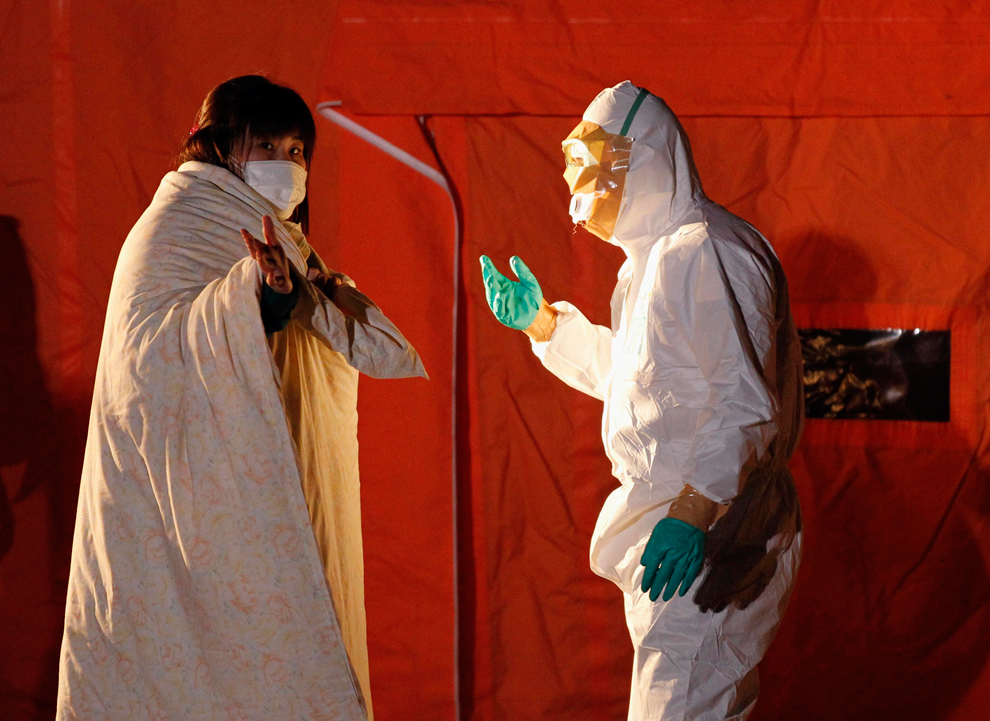You’ve seen photographs of the devastation, the images that chronicle the magnitude of the quake and the sheer mess it can make, and you’ve seen photographs of the rescue efforts, as governments swing into action to provide shelter, food, medical care for the survivors, and you’ve seen photographs of those who didn’t make it, and of those who now are wounded by grief, sometimes watching helplessly or walking aimlessly through a world turned upside down. But you might not have seen an image such as this one:
The caption at The Big Picture said that “an official in protective gear talks to a woman who is from the evacuation area near the Fukushima Daini nuclear plant in Koriyama.” I find the description puzzling, as the woman clearly is speaking to the official as well. The difference reveals more than gender bias, although that should be pointed out. We are to believe that the official is instructing the woman, guiding and helping her on behalf of her safety and others as well. Shouldn’t communication during a disaster be from the official to the citizen, and from those who are equipped with modern technology to those who are wrapped in a blankets? Well, yes and no, not least because effective response to a disaster depends on two-way communication: those who are deployed need information from those who have direct experience of what is happening on the ground. Given the sensory deprivation involved with that Hazmat suit, she probably can help.
But I digress. One reason this photograph is remarkable is that it seems to be a still from a science fiction movie. More precisely, by considering it as a movie still we can begin to discern its ability to reveal something about our civilization.
There she stands, one of the new nomads, continuous with primitive peoples from tens of thousands of years ago and yet newly vulnerable. Her blanket and mask were machine made, but she seems to be illuminated by firelight, and her gesture suggests that she knows the terrain and even how to negotiate with the alien questioning her. But we know that she is in danger; it’s as if the red tent behind them is blaring a continuous state of emergency.
As well it should, for what kind of world includes the figure on the right? Its clothing isn’t something that was grabbed while scrambling for safety. The suit and gloves were designed, tested, manufactured, ordered, and worn in training because they are part of the normal operation of managing the nuclear reactor. That is to say, because responding to nuclear catastrophe is part of the normal operation of this society.
A friend has remarked that prophets are always right because their predictions of destruction in the future actually are descriptions of what is happening right now. (When the effects become evident down the road may be less well known; similar to public opinion polling, perhaps we should grant prophets a margin of error.) The earthquake had to come, and the reactor, despite the many precautions taken, was likely to crack and release radiation, and both happened because of natural and social processes that were underway, day after day, well before the bad news arrived. Thus, we might consider how the photograph above reveals not only that a dystopian future could happen, but that we already are getting used to it.
Photograph by Kim Kyung-Hoon/Reuters.
Update: For a fine essay on the role of science fiction in Japanese public culture, see “Japan’s Long Nuclear Disaster Film” by Peter Wynn Kirby at the New York Times Opinionator Blog.

[…] See also After the Quake: When You Realize Science Fiction Is Real […]